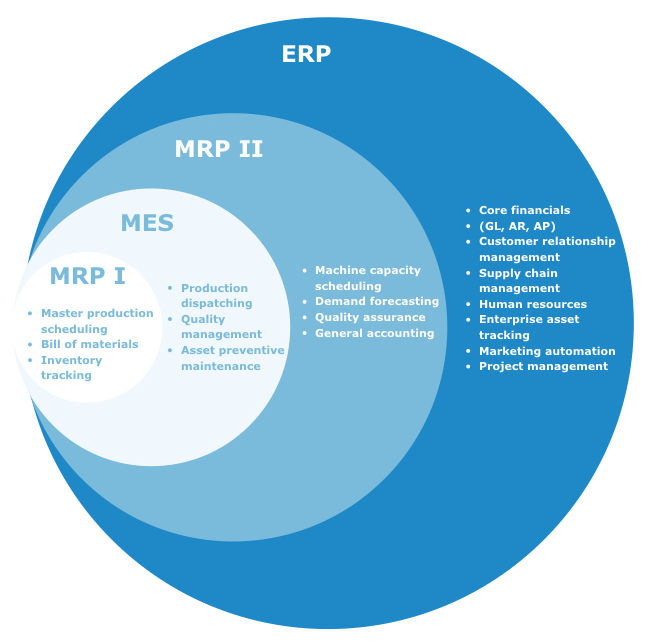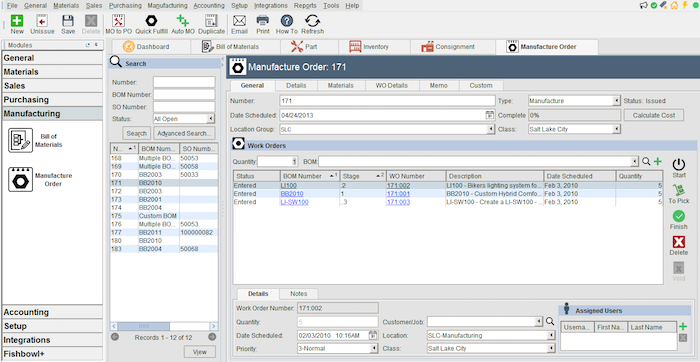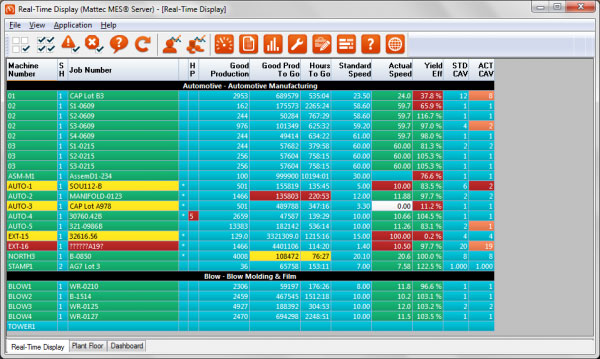Manufacturing Maintenance: How Does an MES Help?
In manufacturing, it takes both production planning and strategic maintenance to avoid costly machine downtime.
So it’s not uncommon for the maintenance team to be closely involved in new software implementations. Maintenance should play a major role in evaluating any manufacturing solution.
According to Gartner’s Market Guide for Manufacturing Execution System Software (content available to Gartner clients), the market for manufacturing execution systems (MES) grew to an estimated $3 billion in 2015.
These systems are often offered as modules to enhance an enterprise resource planning system (ERP) with preventive maintenance features comparable to a typical computerized maintenance management system (CMMS).
To find out more about what these systems can offer maintenance professionals, I spoke with Paul Ellis, director of sales for Epicor’s Mattec MES. I also talked to VP of Development Kendrick Hair and Sales Director Dave Bauerle of Fishbowl, which offers Fishbowl Manufacturing.
Here’s what we’ll cover:
What Is a Manufacturing Execution System?
Maintenance Features and Benefits of an Integrated MES
What Is a Manufacturing Execution System?
According to Gartner, manufacturing execution systems “manage, monitor and synchronize the execution of real-time, physical processes involved in transforming raw materials into intermediate and/or finished goods.”
The definition is broad because each manufacturer has unique challenges, and vendors tend to target specific industry niches and/or customize solutions for each client. I reached out to Forrest Burnson, our Software Advice manufacturing software expert for his view:

“MES systems are focused on specific day-to-day manufacturing processes. Most ERP suites will have manufacturing modules, but because MES is hyper specific to whatever they’re manufacturing, an organization will typically deploy an MES system that integrates with their ERP.”
Forrest Burnson, former Software Advice manufacturing software expert
Think of an MES in relation to other manufacturing systems: A materials requirement planning system (MRP) compiles materials and schedules the production, then the MES uses that information to manage and optimize the quality of the production process. Meanwhile, an ERP typically handles core financials, supply chain, marketing, HR and other functions of the entire enterprise.
Functional Areas of MRP, MES and ERP Software

Typically, MESs cover the following functional areas:
Monitor and optimize the entire lifecycle of a product being produced, with the goal of improving product quality. | |
Create production schedules for machines and tools and track inventory levels for materials and spare parts. | |
Production monitoring and analysis | Monitor production assets to reduce downtime, alert managers to potential problems and deliver a wealth of metrics to use in reporting and analysis. |
Schedule preventive maintenance for production assets and tools used to repair those assets. |
Keep in mind that the MES market offers a lot of variation in systems, and vendors can help customize a solution that meets your requirements. Still, it’s important to evaluate each vendor for the capabilities you need.
For many manufacturers, an ERP is the primary automation solution, but an MES can offer complementary functionality focused on the complex aspects of manufacturing.
Below, we’ll look at how an integrated, manufacturing-specific system can improve your production while helping to manage maintenance tasks.
Maintenance Features and Benefits of an Integrated MES
As leaders in the manufacturing solution space, Ellis, Hair and Baurele agree that maintenance departments should always be involved in software selection.
“In virtually every case, maintenance management is part of the decision making team,” Ellis with Epicor says. “Even if they aren’t initially involved, someone invariably says: ‘Maintenance is going to want to see this.’”
This is because of the critical maintenance features commonly available in an MES:
Preventive maintenance
Condition monitoring
Barcoding
Work orders
Inventory management
Reporting


Like a CMMS, users can create maintenance-specific work orders in Fishbowl Manufacturing
“Maintenance on a machine, things like an oil change or replacing filters; that’s a standard use case for a lot of our customer base already,” Hair from Fishbowl says. “It’s a good fit and still allows for all of the assets to be tracked, as well as the costing that goes along with those parts consumed with maintenance.”
Ellis and Hair say many of their customers use manual calendar-based methods of tracking asset and scheduling maintenance before switching to their systems.
“This is better than not maintaining the equipment, of course, but it is quite inefficient,” Ellis says. “It leads to servicing assets before the optimal usage has occurred, or sometimes later than necessary to ensure the longevity of the equipment. Both lead to higher than necessary costs.”
Similar to a CMMS solution, MES users can configure the system to automatically schedule maintenance based on real-time condition data streamed directly from the machines on the plant floor. For example, if an asset’s condition veers out of predefined parameters, an alert notifies a technician and a work order is generated.
This results in fewer repair tasks, performed only when assets indicate a problem.


Real-time machine condition data in Epicor’s Mattec MES
An MES offers functionality for the key aspects in a manufacturing environment. Users can optimize production quality through strategic planning and monitoring, and maintenance personnel can maintain critical assets based on real-time data.
Because of these capabilities, manufacturers can expect multiple benefits:
Maximize machine loading and reduce downtime
Increase efficiency and time savings with fewer maintenance tasks
Identify production trends and issues with advanced reporting
Boost production quality and efficiency
Because an MES is typically paired with an ERP, more departments can access shared data to increase collaboration. Being able to see exact production schedules allows technicians to plan preventive maintenance at the least disruptive time, Ellis says.
“Simply look at the real-time schedule, and allocate the technicians’ time accordingly,” he says. “Changes to the schedule can update the PM timing automatically, so you can optimize the deployment of your resources.”
By customizing your system to your specific type of manufacturing, increasing collaboration with other departments and improving maintenance capabilities, you get a more organized and profitable plant.
Takeaways
As a maintenance professional, you may find that MES integration can deliver the features you need to keep production assets running while improving the process over time. These features are also often found in a stand-alone CMMS.
The difference is that the production schedules, maintenance plans and historical data is in one system. This information is accessible to all who need it, so departments can make more strategic decisions that avoid production disruptions and identify areas of improvement.
Here are some aspects to keep in mind when seeking an MES:
Look for an integrated system offering real-time production schedules. Every team should be able to view production schedules based on the current conditions instead of what was planned. Sharing this information among departments leads to more coordinated decisions.
Move toward predictive maintenance. If you haven’t moved beyond calendar-based maintenance, an MES can help. When configured, an MES can monitor machines and trigger alerts so that work is only done when necessary.
Find a vendor that can customize the system. Whatever type of manufacturing you do, MES vendors are often able to customize a system to include the features you need and to capture the data you want.
If you’d like to learn more about what an MES can offer, visit our MES category page to read our buyer’s guide and user reviews. Or, email me at taylorshort@softwareadvice.com; I’m available to help answer questions about manufacturing maintenance.